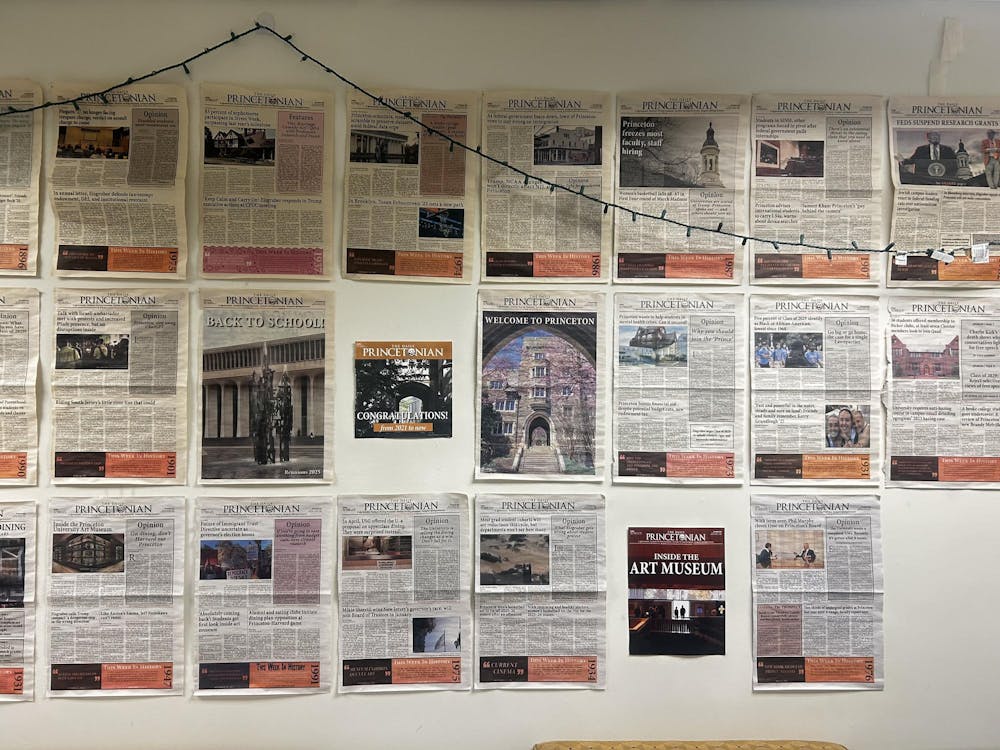Environmental concerns triumphed over development Nov. 2 when Gov. Christie Whitman ordered the N.J. Department of Transportation to complete an Environmental Impact Statement on the Millstone Bypass, a proposed 2.3-mile highway intended to mitigate congestion on U.S. Route 1.
At least that is what Princeton residents would have you believe, as they breathe sighs of relief. However, as West Windsor Township mayor Carole Carson pointed out, such opposition always arises upon the proposal of new roads — just as with new landfills, toxic waste dumps and other such projects.
Sudden environmental conscience in response to local threats has been labeled the NIMBY phenomenon, for "not-in-my-backyard." This acronym carries with it the connotation that it is not the environment precisely that concerns people, but rather their own quality of life. When one township rejects a dump, some other — usually poorer — neighborhood gets it instead, or the old, overflowing dump continues to be inundated with the flood of waste. It is the same in this case: Because we have succeeded in delaying the bypass, Penns Neck residents continue to suffer what they feel is unbearable noise and air pollution from the traffic density on Route 1. Moreover, Carson says that the delay poses a direct health threat, since emergency vehicles presently have insufficient access to the area.
Our "environmental" concerns do seem a little self-serving here. Naturally, Princeton residents do not want more traffic in this area — Washington Road and Nassau Street are already headaches. But even though the added vehicles would contribute to declining local air quality, they seem to threaten people's preference for less traffic more than the environment's well being. The impact of the new roadway on the serenity of the celebrated towpath a mere 400 feet from campus and the loss of the beautiful — though non-natural — "elm entrance" on Washington Road are also frequently cited reasons for fighting the bypass proposal. But again these are man's — not nature's — concerns.
Whitman's call for an EIS seems less like a triumph of nature over development than it does a triumph of us (Princeton residents) over them (Penns Neck residents). Phrasing it that way does not engender the same warm feeling of satisfaction, does it? Is there no solution that would be good for everyone and the environment? Answering this question is the very purpose of the EIS — to ensure that the proposed solution is the best of all possible alternatives.
Earlier, I suggested that traffic — like trash — has to go someplace. But is that really so? Why do we (North Americans) give so little attention to source reduction? Do we really need all the things we buy, only to toss them away a few months later? And for those things we do deem necessary, do we really need all the packaging that comes with them? People who religiously reduce, reuse and recycle can achieve amazing feats. My conservation-minded grandparents produce one half-filled plastic grocery bag of "rubbish" a week.
Similarly, we could do much to alleviate traffic congestion without building any new roads, an alternative favored by George Hawkins '83, executive director of the Stony Brook-Millstone Watershed Association. Yet there is no indication that any of the proposals considered thus far involved such a radical idea. The possibilities are numerous: carpooling incentives, more convenient, subsidized trains and buses and even bike lanes. New Jersey has obviously put little effort into these solutions. Building new roads never solves traffic problems in the long run, anyway. It only creates new traffic problems elsewhere — new, faster, wider roads create a car-friendly landscape that provides incentives to drive and disincentives to walk or bike.
It is time for Princeton students to get local with their activism. We should take advantage of the EIS's focus on public involvement to press the N.J. DOT to consider non-road-building alternatives (e-mail CorrespondenceUnit@dot.state.nj.us). Meanwhile, we should thoroughly research feasible alternatives and present them to the DOT. Aren't Wilson School policy workshops positively aching for such public problems to solve? The DOT may not be progressive enough to propose environmentally friendly alternatives, but that does not oblige us to watch idly as they transform our greenery into a concrete eyesore. Kai M.A. Chan is an ecology and evolutionary biology graduate student from Toronto, Ontario. He can be reached at kaichan@princeton.edu.







